4 Types of Parsley to Grow & Enjoy Right at Home
Author: Jen Worst | Editor: Omar Alonso
Review & Research: Jen Worst & Chris Miller
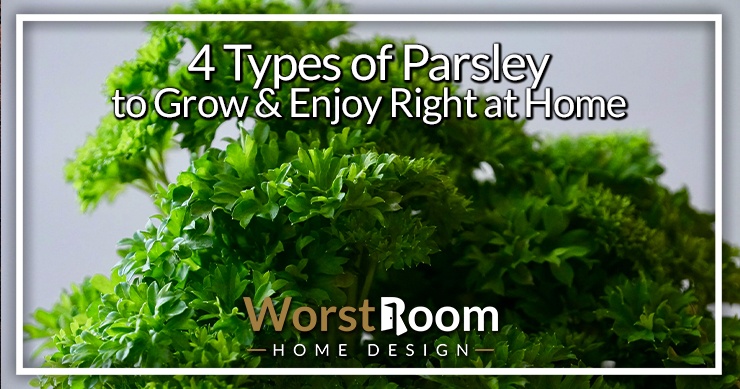
Parsley is a highly preferred spice or condiment used globally. No matter how you use them, all the different types of parsley plants will give your dish a rich, fresh, and elevated flavor.
There are several different kinds of parsleys available to purchase or grow. Although most may seem to be just the same, there are certain distinct features to each of them that make them unique and differently flavorful.
4 Types of Parsley
Therefore, to learn more about this plant, read this entire blog to find out the different varieties of parsley and how to care for them properly in your garden, window sill, or herb spiral.
Flat Leaf Parsley
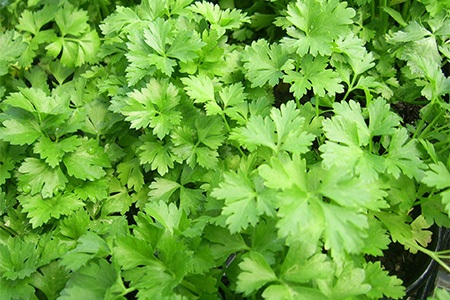
Widely used for culinary purposes, this variation (Petroselinum crispum var. neapolitanum Danert) has a distinct taste and flavor that remains the same for a long time. Adding this to any meal will give it a boost of flavor and depth. It has a very noticeable freshness to it as you cook it.
Whether you cook it over the flame or add it as a garnish, the freshness from adding it is significant and evidently tasteful. It's best grown in the USDA Hardiness Zones 2-11 in full sun to partial shade in well-draining, moist soil. It can grow through the winter in zones 9 through 11, but in 8 and lower you should plant it in early spring. The same goes for all the types below as well.
Of all the different parsley plants, growing this in your balcony or backyard is relatively straightforward, and these are also beautiful additions to your butterfly gardens. Maintaining these parsley types requires full to partial sunlight; however, direct sunlight for extended periods could cause irreversible damage to the plant. It’ll dehydrate the soil and strip any moisture.
These parsley varieties are ideal for placing it around a window seal where it will receive full to partial sunlight for a few hours daily. Moreover, it’s essential to move the plant if it’s receiving too much sunlight as these are known to wilt very quickly.
Even the soil needs to be checked and ensured before planting it in. If the soil is not well-drained, the plant will wilt and be overwhelmed with moisture. Once this plant begins to show signs of withering, it’ll immediately start to lose its taste and seem lifeless.
In case of a sunny day when the heat is rather intense, you must relocate your plant. The relocation is essential to keep the plant alive and retain its freshness and aroma.
Moreover, flat leaf types of parsley plants can be used for soups, curries, sauces, and stew to give it a complexity of freshness that elevates the taste of the meal. This is the only type of parsley that grows about 37 inches in length in a shrubby bush-like shape.
Curly Leaf Parsley
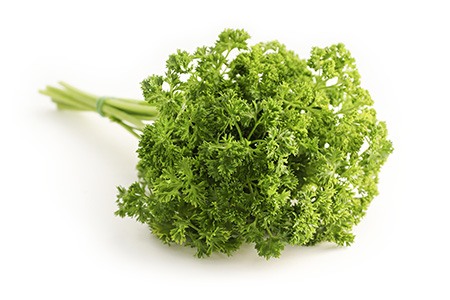
This version of parsley, sometimes called common parsley, is also used in cooking and garnishing while adding freshness to the meal. Although it does have quite a bit of similarity with Flat Leaf Parsley, it tastes much milder and more subtle.
The scientific name of these kinds of parsley is Petroselinum crispum neapolitanum. It's best grown in the hardiness zones of 2-11 in full sun, though in the hottest climates some shade in the afternoon is a good idea. Like others, give it moist soil that drains water easily.
The amount you add to meals does matter when using curly leaf parsley. If you want a more intense fresh flavor from the dish, you need to chop it fine and rough to release its aroma and add it in hefty amounts to intensify its flavor.
It’s essential to allow full sunlight no matter what. Partial sunlight and an inadequate amount of it will cause the plant to wilt and die off very soon. Even in hot climates and summer heat, total exposure for certain hours of the day is required for the well-being of this plant.
However, prolonged exposure to intense sunlight could cause the plant leaves to burn off slowly and eventually die off within a brief period. Moist soil for these parsley types plays a significant role in its well-being. Too much water content will also be responsible for killing it relatively quickly.
It has somewhat ruffled and curly leaves that are easily distinguishable. The green color pleases the eyes and divides into pairs of ribbed stems. It can be used fresh or dried to add flavor to your meal, much like the several types of basil or any other garnish or spice.
Japanese Parsley
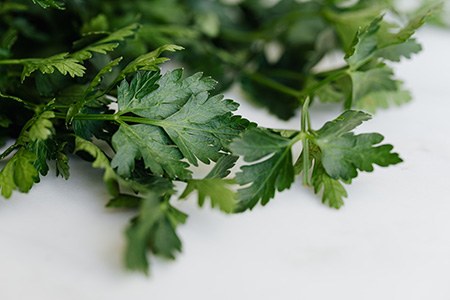
Native to Asia, this is a sensitive and different parsley that needs to be well cared for to ensure longevity, healthy growth, and aroma development. It can be directly eaten as it is or be cooked to infuse its aroma into meals. It has a specific bitter note if consumed as is and can overpower its minty freshness.
To care for this parsley, you need to ensure the soil it is planted on is well-draining and does not store water underneath. It desires shade to grow optimally and performs the best in the USDA Hardiness Zones of 4-7. It's scientifically known as Cryptotaenia japonica.
The soil needs to be moist and soft so the plant can grow healthy and aromatic. The aroma in this version is relatively mild, which will only fade away more each day if the water has been in contact with the root for a long time.
However, stagnant water at the bottom of the pot will cause the roots to rot away in a matter of days and kill the plant. Once the root of these types of parsley begin to deteriorate, the entire plant will die within the next 24 hours.
It must be in the shade and away from direct sunlight to ensure growth. Total exposure to sunlight will cause the plant to burn out. Therefore, it is susceptible and tends to die without adequate care if the requirements are ignored.
Unlike other parsley varieties, this one grows somewhat longer stems with a pointy end. Easily distinguishable from other parsleys, this one grows in three sets and with a bright, vivid green color shade.
You can eat all parts of this plant, all the way from the roots up to the leaves. They leaves are often used as seasoning or types of garnish, while the roots and sprouts go well in salads.
Hamburg Parsley
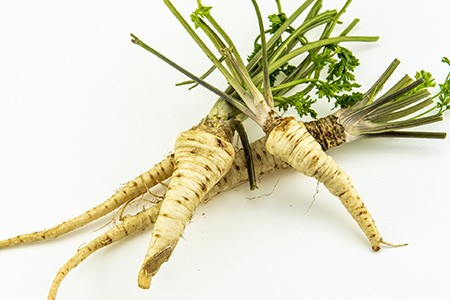
It is tough to distinguish between a Hamburg Parsley and a Flat Leaf Parsley. However, these are very different in taste, flavor, and aroma. Hamburg parsley has a rich and intense flavor of freshness with a minty aftertaste which can be overpowering sometimes. It grows much different from flat-leaf parsleys too.
It grows thick tubers, long and pointy, almost like a parsnip. This parsley originates from Germany and has been a staple there ever since. It also goes by other names, such as Dutch rooted and root parsley.
Growing it requires the soil to be moist and well drained to ensure adequate water consumption. This variation also prefers direct sunlight as it thrives in intense heat. Petroselinum crispum (Mill.) Fuss does best in the hardiness zones of 5-10 in full sun.
However, exposure for too long will cause these parsley types to be brown at the top and burn away over time. Alternatively, too little sun exposure will also cause the plant to wilt as it hinders the photosynthesis process. Therefore, the plant has low food production and barely any taste.
The tubers from this parsley have a clean nutty taste that is similar to that of celery and carrot. This nutty taste and the minty freshness can produce a peculiar and unexpected flavor.
This is why, for the most part, it is recommended to pop it in with stews and soups and other gravy-like items to cook over the flame for a few minutes.
That’s not all; The roots of these parsley varieties are used as vegetables with gravies and savory pies. At the same time, the leaves are well-known for being fresh and mint-like refreshers over any dish. The sprouts on this are also edible when paired right. Especially with most salads, the sprouts combine well to give off a crunchy texture to the salad.
You'll notice these kinds of parsley by their similarity to flat-leaf parsley, except its tubers are much more of a white color and can grow up to 8 inches in length. The tubers have a nutty taste, akin to carrots and celery.
Types of Parsley to Grow in Your Garden
Parsleys can give you the ultimate taste of spice and different flavors in food, whether used dry or fresh. Different parsleys add different richness and complexity to any meal while elevating the flavor without overpowering or concealing the actual taste of the dish.
So, after going through this blog, you should know the different types of parsley plants and how they can give your meal a whole new taste.



